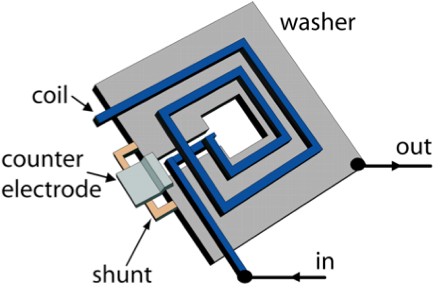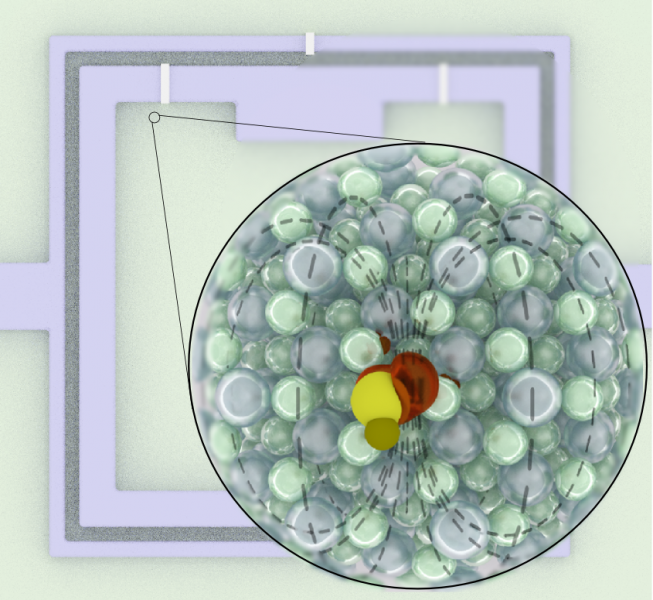Vince Lordi, Jonathan Dubois, Keith Ray, Nick Materise, Yaniv Rosen
Collaborators: Chang-Eun Kim (Purdue Univ.), Nicole Adelstein (California State Univ., San Francisco), Donghwa Lee (Chonnam Univ.), Ilke Arslan (PNNL), Chris Richardson (Laboratory for Physical Sciences), Benjamin Liu, Steve Valone (LANL)
The field of quantum computation and quantum information processing is attracting great interest for the potential to exponentially speed up the execution of certain important classes of algorithms, which are relevant for cryptography, image processing, and other applications. Superconducting qubits (SQs) represent one of the more promising routes to the realization of a scalable quantum computer. The present performance of these systems, however, as measured by the lifetime of quantum states, is largely limited by an as yet unidentified source of low frequency flux noise. While recent experimental and theoretical work suggest that noise may arise from coupling to unpaired spins in the substrate or at the interface between metal lines and the substrate, an understanding of the microscopic source of these unpaired spins is lacking. We are undertaking a computational materials science study to identify the atomic-scale nature of the sources of unpaired spins in SQ devices, to enable process design to mitigate flux noise. Various defects and impurities that may be present at the interface can introduce states with fluctuating local magnetic moments. By identifying these structures, we hope to design process strategies to reduce their concentration, eliminate them, or passivate them. We are collaborating with experimental teams to test and validate our theoretical findings on strategies to reduce flux and charge noise in SQs, including a recently-awarded collaboration with the University of Wisconsin, Madison Quantum Probes of the Materials Origins of Decoherence.
We are also working on elucidating the relationship between materials defects, impurities, surface contaminants and device performance of surface ion trap qubits and semiconductor-based qubits. The microscopic materials models we develop are incorporated into multiscale models of the quantum response of the devices.

Figure: Schematic illustration of a superconducting qubit device.

Figure: A hydroxyl adsorbate from ambient water vapor on the surface of the sapphire substrate used to fabricate this superconducting qubit leads to spin localization (red isosurface) and local paramagnetism (shown by the magnetic field lines), producing decoherence noise.
Foundational funding from the Laboratory Directed Research and Development program at LLNL is acknowledged.
Contact: Vince Lordi
